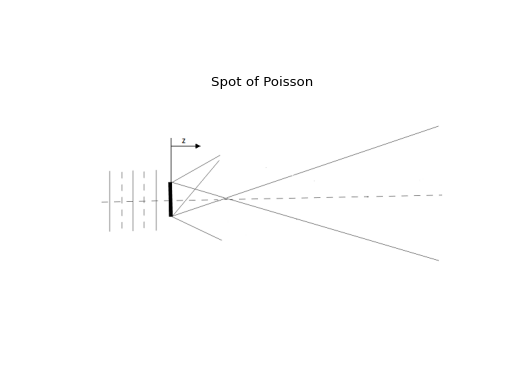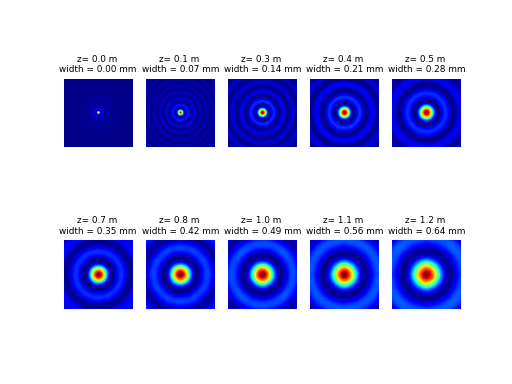7.4.1. From Poisson spot to a non-diffractive Bessel beam.
The waves originating from Huygens point-sources at the edge of the disk can be considered as a collection of spherical waves which are all in phase because the disk is illuminated by a monochromatic plane wave. Each spherical wave has the same amplitude as well. As a result these waves interfere constructively to a Poisson spot near the axis. It can be shown that the intensity distribution is approximately given by:
\(I(r,z) \approx I_0 J_0 ^2 ( \frac{2 \pi \alpha r}{ \lambda } )\)
with:
\(\alpha = \frac{a}{r}\) is the angle of the wavefront near the axis, \(2a\) is the diameter of the disk
The width of the beam is given by:
\(w(z)=\frac{2.44}{ \pi } \frac{ \lambda z}{a}\)
and is proportional to the distance, z.
(Source code, png, hires.png, pdf)

